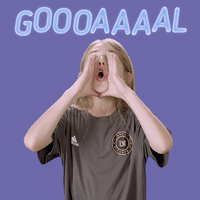Hi, I’m Kate. Ask an Author is a reader-supported newsletter providing advice and support for authors at all stages of writing, publishing, and hand-wringing. If you know someone this applies to, you can forward them this email and encourage them to sign up. Have a question? Fill out this form and I’ll answer it in a future response.
News!
“Care and Feeding” is out in The Rumpus. (content note: law enforcement, mental health, description of violence)
“Good Dead Girls,” is out in No Tokens (content note: sexual assault)
I pretty regularly have conversations with people about our goals—setting them and meeting them and how to use them to motivate rather than stifle our work. I was going to send someone an email with a few more thoughts I had after we’d been talking about it, and then I realized it’d be a good post here because maybe you, too, are thinking about your writing goals (for the summer, for the rest of the year) and maybe your goals are working great for you (hooray! please share your wisdom!) but maybe you’d be into some other ways of thinking about how you can come up with writing goals and then adjust along the way if/when things don’t go as planned.
I’ve written in the past about the usefulness of setting goals to help break large projects into manageable chunks. Having achievable goals also helps keep track of your work and progress, and gives you the satisfaction (dopamine!!!) of meeting those goals and checking things off the to-do list. Here, I want to think more broadly about two things: the different types of goals you can set, and a different way of measuring what your goals can be.
The danger with goal-setting is that it’s tempting to set something big and lofty and hoped-for—but then if you don’t meet it, you’re left feeling totally deflated. Cue the spiral of doom: maybe you beat yourself up. Maybe it’s hard to get back on track afterward. Maybe it keeps you always focused on what you haven’t done, instead of recognizing what you have. All of these things are energy spent feeling lousy that could have been better put into, you know, actual writing.
It’s one thing to not meet a goal because you can honestly say you didn’t put in the work you needed to get it done. But it’s totally self-defeating to not meet a goal because the goal itself was unrealistic and not fair to yourself in the first place.
One way to reframe this problem is to set multiple goals that take into account the reality that sometimes things don’t go the way we always want: a doable goal, a moderate goal, and a stretch goal.
The doable goal is what you know you can reasonably accomplish in the time you have available. You’re confident you can hit this, and it’ll feel really good to get it done.
The moderate goal is a little bigger. It’s what you ideally want to be able to get done, but it’s still not a given. If everything goes well and you hit the doable goal, you can stretch for this next accomplishment. It’s not guaranteed you can do it, but you’re going to try.
A stretch goal is an even bigger reach. If everything goes perfectly, the words flow, life gives you a break, what’s the best-case scenario you can hope for—but not count on? This is the dream scenario, but you know it’s a stretch so you aren’t going to beat yourself up if you don’t reach it.
Say you tell yourself you’re going to finish a proposal by the end of the summer. Sounds good! But what if your kids are home from school and it’s crunch time at work and you’re going on vacation? Suddenly that big goal might not be so realistic. It could be that a doable goal is a rough draft, even if it’s messy. Then the moderate goal is to have a solid draft in place by the end of August. The dream goal is to have that proposal polished and ready to go—but if it doesn’t happen, you know it’s not for lack of trying, and you aren’t going to let that stop you from feeling good about what you did get to.
I might want to finish a manuscript by X date, but there are a zillion and one reasons that might not happen. Some of those reasons will be within my control, but a lot of them won’t be. If you have to adjust your goal for the good of the project, sometimes that’s just how it goes. Especially if it’s a self-imposed goal. Double especially if you can’t hit the goal because you’re taking more time to make the project even stronger. Obviously you don’t want to keep pushing things back if you’re really just making excuses—goal-setting requires a degree of honesty with yourself, and sometimes a hefty dose of tough love so you aren’t just pushing back the finishing line over and over again. But having multiple goals along a continuum can give you more opportunities to maintain your momentum and better ensure your success.
Often, the goals we set are external and quantifiable. This could look like writing a certain number of words, or pages, or for a set amount of time, or making it through a specific scene or moment. This makes sense, because it gives you something concrete to work towards and a definitive way of knowing if you nailed it or not. But telling yourself that you have to write X number of words, or finish Y part of a project, doesn’t really take into account what it might require for you to meet that goal. What if we shifted the goal to include something more internally determined?
Enter the Rate of Perceived Exertion.
The Rate of Perceived Exertion (RPE) is a measure of physical exertion in which someone exercising rates how hard they feel like they’re working. I first learned about it from running. The idea is to determine how far and how fast I’m going to run by using a scale of 1-10, 1 being no exertion and 10 being the hardest I could possibly push. So instead of saying I’m going to run at X mph for Y distance, the goal is to run at a certain RPE for a set amount of time. Running at a 5, say, means running about halfway between a gentle walk and an all-out sprint. At that rate, I should still be able to carry on a comfortable conversation in full sentences. By a 7, though, I should be working harder, and by 8 I shouldn’t be able to talk while moving.
I’m not a huge runner, but I think this way of approaching my own exertion is a pretty awesome way of thinking about writing, too. What if we approached our work not (only) through meeting external goals like word count that we might not be able to control, but by looking internally at our RPE for a sense of how hard we’re working? There are times when things are cruising along, and it’s not nothing but it feels like a 4 or 5, like a steady pace that you could keep writing at over time. Then there are times when writing feels like an 8 or even a 9, where it’s just really, really challenging and you’re working hard and pushing yourself. No one can run very long at a 9—and you can’t write for long at a 9, either.
You don’t run faster or farther by always running at your highest RPE. You actually get better by slowing down and building up the baseline of fitness you have to draw on. The same is true for writing. It’s not sustainable to always push yourself as hard as you possibly can (and then burning out and needing more time to recover). This means you don’t have to beat yourself up for not working your absolute hardest every second that you have!!!!! If the goal is to say “I’m going to write at an RPE of 5, in which I’m working at a steady and sustainable pace that I can keep up,” then there’s no need to then come back and berate yourself for not working at an 8, especially because pushing yourself at an 8 is meant for when you need to call upon your reserves and get a short burst in—it’s not for everyday work.
RPE is a flexible measure. It changes depending on how you feel, so it lets you account for all the different ways that life/brains/bodies are always changing. A 7 earlier in a run, when I’m fresh and energetic, is going to be faster than a 7 toward the end of a run, when I’m tired and have been working hard. That’s ok! I don’t need to match my pace from earlier; I just need to adjust to what feels like a 7 (or whatever I’m aiming for) in that moment. Some days the writing will flow. Other days will be harder. If you have a word count goal, you might meet it handily on the good days, and then feel like crap when you can’t get there on the harder days. But if you include RPE in your evaluation and say that your goal is to work on your project enough that you’re hitting a moderate RPE, then you can reach that goal even if you didn’t meet the word count goal—and know you did good work and stayed in touch with your project.
Your RPE is your own—it has nothing to do with somebody else’s scale. It’s your perceived exertion, not what someone else thinks is “hard” or “enough” or what you “should” be doing. It’s about how YOU feel on any given day. If you get sick, if work is busy, if family is complicated, if your friends need more time, your RPE is going to change. Ultimately, writing will always come down to getting words down on the page. There’s no workaround to that. But your relationship to those words, and how you feel when you’re writing those words, doesn’t have to be antagonistic. Think about how hard you think it’s reasonable to expect yourself to work, and try to aim for something sustainable. (Or if you’re always driving yourself at a grueling pace, maybe think about how hard you think it’s reasonable for someone you love to work, and then apply that same metric to yourself as though you, too, are someone you love.) Think about your doable goal and your moderate goal, before you worry about going straight for the dream goal. If everything goes well and you hit those first goals, have a bigger dream goal to aim for! If you can’t reach a word count goal or a page goal or a time goal, what might happen if you thought about your RPE instead?
Sometimes being kind to yourself means holding yourself accountable and doing the work. Sometimes being kind to yourself means recognizing what’s unrealistic or unsustainable and not holding yourself to impossible standards. I hope no matter where you are with your writing, that you’re being kind to yourself and setting yourself up for continued success.
Keep going!
Kate





